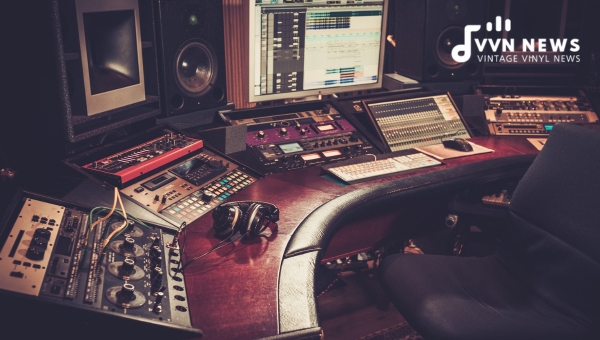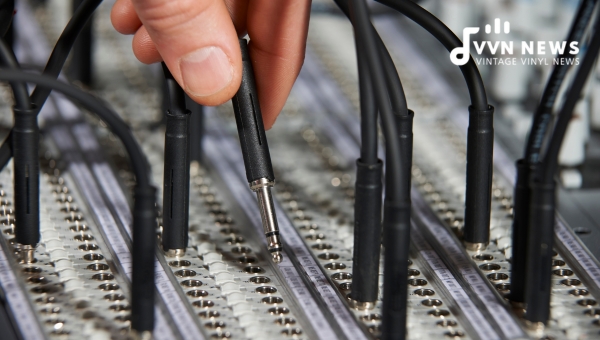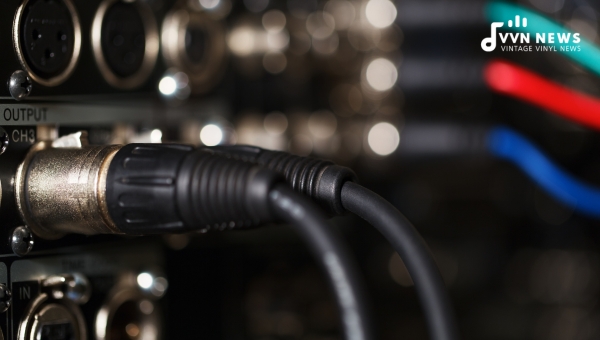Welcome, folks, to an empowering and educative session where we will demystify all you need to know about recording studio cables.
If I were to be brutally honest with myself, and you, of course, recording studio cables weren’t something that excited me when I first set foot into this beautiful world of music.
The glitz and glamor of the guitars, synthesizers, MIDI interfaces, and shining condenser microphones used to steal my attention.
But over time, as I dived more profoundly, I understood just how crucial these unsung heroes – our dear recording studio cables – are in ensuring flawless music production.
So here’s an earnest attempt from my end to help you unravel the science behind recording studio cables: all you need to know.
After years of trial and error in both home studios and professional setups, sifting through various types and brands of cables (while also burning a hole in my pocket), I finally recognized how crucial it is to understand them. So, let’s get started on this enlightening ride together!
What Are Recording Studio Cables?
Recording studio cables are essential components of any recording setup that facilitate the transmission of audio signals from one device to another. They connect various equipment like microphones, headphones, speakers, and mixers in a recording studio.
There are different types of recording studio cables, such as XLR cables (for microphones), 1/4″ cables (for guitars and other instruments), and RCA cables (for stereo equipment).
These cables consist of conductors, insulators, connectors, and shielding material.
The quality of these components determines the overall performance & durability of the cable.
Using high-quality studio-grade cables for best audio signal transfer and minimal signal degradation or noise interference is recommended.
Types of Signals

Arguably, one of the most crucial aspects you need to understand about recording studio cables is the type of signal they transmit – Analog and Digital signals.
Analog Signals
Analog signals are continuous waveforms that constantly vary in amplitude or frequency, mirroring the sound wave from the source.
This signal journey often begins with a microphone cable (XLR), transmitting that rich, warm, and “organic” sound we all love.
However, you’ll want to minimize cable length and use high-quality cables because analog signals are susceptible to noise interference and signal degradation over long distances.
Digital Signals
Digital signals, on the other hand, are represented by binary data – sequences of 1s and 0s.
One significant advantage of digital cables over analog counterparts is immunity to noise interference over long distances.
Technologies like USB, Firewire, HDMI, or Ethernet transmit digital audio signal formats. These digital cables help transmit data without any loss across various stages in recording studios.
Comparing the two boils down to application and user preference.
Analog is well-loved for its classic warmth, which may be lost in digital conversion, whereas Digital offers greater consistency and less susceptibility to interference.
Also Read: Flute Vs Recorder [Which Instrument Is Best For You?]
Balance vs Unbalance: What’s the Difference?
When recording studio cables, one critical aspect to understanding is the difference between balanced and unbalanced cables.
Simply put, the significant difference lies in how signals are carried.
Unbalanced Cables
Unbalanced cables possess two conductors: a signal carrier and a ground. These cables are usually found in contexts with limited need for long runs.
They come with a significant drawback – they pick up noise and interference quite quickly because of their design. Most instrument cables (like quarter-inch jack) are unbalanced.
Balanced Cables
On the contrary, balanced cables consist of three conductors: two signal carriers and a ground.
The key ingredient that sets these apart is that one of the signal carriers is phase-inverted.
This phase inversion helps to cancel out any noise picked up along the way, making balanced cables particularly suitable for long cable runs without signal loss or additional noise.
Choosing between balanced and unbalanced largely depends on your use-case scenario – balanced for longer runs with fewer noise issues, unstable for short-distance connections with less potential for interference.
Getting Acquainted with Cable Levels

Understanding the different levels of cables in a recording studio is not just tech-speak; it’s fundamental to bagging that perfect take.
Here, we will distinguish between Mic-level cables, Instrument-level cables, and Line-level cables. All three have unique purposes and are determined by their signal strengths.
Mic Level Cables
These are your standard XLR cables to connect microphones to other audio equipment like preamps, audio interfaces, or mixers.
The signal sent through a mic cable is generally relatively small, hence the name “mic level.”
The distance between the source (the microphone) and the destination (an amplifier or mixer) can enhance noise interference.
To counteract this, mic-level signals often need to be boosted by a preamp before they’re sent on their way.
Instrument Level Cables
Next up are Instrument Level Cables, also termed as high-impedance or Hi-Z cables.
These primarily include 1/4″ TS (Tip-Sleeve) and TRS (Tip-Ring-Sleeve) shielded cables that are commonly utilized with electric guitars, basses, or keyboards.
They carry slightly stronger signals than mic-level cables but require an input receptacle like an amplifier or direct injection box for optimal results.
Line Level Cables
Line Level Cables carry the strongest of the three types of signals.
These include a balanced 1/4″ TRS stereo jack and XLR connections to link mixers to power amps or powered speakers studio monitors, among other pro-audio equipment.
Devices receiving line-level signals don’t require a preamp but precise gain adjustment for ideal sound quality.
These three cable levels ensure seamless communication between different audio gears within your studio setup -ingraining them into your recording routine will take your sound creation to the next level.
Also Read: Autechre’s Flutter Vs The Criminal Justice [Music Vs Politics]
Types of Recording Studio Cables
Digging deeper, we’ll dive into the four most commonly used types of cables in professional recording settings: Microphone cables (XLR), Instrument cables (TS and TRS), MIDI cables, and Speaker cables.
Microphone Cables (XLR)
In most recording studios, XLR cables are the unsung heroes that work behind the scenes.
They tend to go unnoticed until one fails at a crucial moment! XLR stands for X Connector, Locking Connector, and Rubber Boot.
These three-pin connectors are central to live sound applications and studio recordings due to their balanced nature that eliminates unwanted noise.
They usually carry mic-level signals from your microphone to your interface or mixing console.
Notably, one end of an XLR cable usually plugs into a microphone, with the other end able to connect with numerous devices, including audio interfaces and preamps.
Creating a balanced line that mitigates electromagnetic hums or buzzes caused by external sources – say those fluorescent lamps or power cords lying around – ensures top-notch fidelity of your valuable sound inputs.
Instrument Cables (TS & TRS)
The two commonly used instrument cables in studios are TS (Tip Sleeve) and TRS (Tip Ring Sleeve).
Instrument cables mainly connect musical instruments like guitars, keyboards, bass guitars, and various audio hardware such as amplifier units.
The chief difference between TS and TRS lies in their composition.
TS cables have two conductors, while TRS has three. This extra conductor provides better protection from external noise interference, thus making it highly suitable for balanced connections like line inputs/outputs and headphone outs.
While you can physically insert a TRS connector into a TS jack or vice versa due to their similar appearance – don’t! This will corrupt your signal, leading to poor sound quality or even risk damaging your gear.
MIDI Cables
MIDI – Musical Instrument Digital Interface – might seem outdated today but when it comes to pairing up electronic music gear like keyboards or drum pads with digital audio workstations on computers (DAWs).
These five-pin din connectors married off on either end of a MIDI cable don’t pass audio signals. Rather they transmit information about musical notes like pitch, velocity & volume, thus acting as vital communicative links between digital devices within your setup.
Speaker Cables
Speaker cables, in essence, connect power to your speakers. Uniquely, these heavy-duty cables conduct higher voltage for speakers and power amplifiers.
Unlike instrument cables, speaker cables contain thicker conductor wire designed to provide smooth, uninterrupted power flow toward a speaker system.
In your studio setup, they breathe life into your monitors or loudspeakers by delivering amplified signals from your interface or amplifier. Be cautious, though, of the cardinal rule:
Never mix and match speaker cables with instrument cables, as this could impair performance and potentially damage your equipment.
Making a wrong connection here could mean catastrophic consequences for delicate components such as your studio monitors or, even worse, causing an electrical disaster!
Best Studio Cables

Quality cables are a top priority when it comes to connecting your studio equipment and translating the magic of sound.
For your convenience, I have curated a list of some of the best-quality cables available in the market.
Before you purchase any cable, ensure it precisely fulfills your needs and connects effectively with your gear.
TISINO
Specializing in professional audio cables, TISINO produces robust lines for various audio interfaces.
Their dual 1/4 inch TS to dual RCA stereo audio interconnect cable is a renowned crowd-pleaser.
These are perfect for connecting professional audio gear to consumer audio components and offer excellent signal transmission.
Notable Features:
- Oxygen-free copper and double shielding for optimum signal transfer
- 24K gold-plated connectors for minimized signal loss
VIOY
VIOY primarily focuses on mid-range recording studio cables that home studio users highly appreciate.
Their XLR to XLR cable is the go-to for microphones, studio recording, and live sound.
Notable Features:
- Soft PVC outer insulator ensures flexibility.
- The connector features silver soldering that offers better soldering connections.
Monoprice RCA to RCA
Monoprice offers a variety of affordable yet durable studio cables.
Their RCA to RCA cable is perfect if you are on a shoestring budget yet don’t want to compromise on quality.
Notable Features:
- High-quality polished metal connectors with gold-plated contact surfaces
- Two color-coded bands for easy left and right channel identification
Hosa CPP-201 & Hosa CSS-110
Hosa is a popular name in the world of recording studio cables, offering reliable solutions for all your studio needs.
The CPP-201 Dual Cable (1/4 inch TS to 1/4 inch TS) and CSS-110 Balanced Interconnect Cable (1/4 inch TRS to 1/4 inch TRS) are worth mentioning due to their durability and professional-grade performance at a consumer-friendly price point.
Notable Features:
- Oxygen-Free Copper (OFC) conductors enhance signal clarity.
Seismic Audio
Known for crafting industry-standard PA speaker cables, Seismic Audio is a reliable brand, especially if you need beefy speaker connections that assure reliable signal transmission even under a high power rating.
Notable Features:
- Thick gauge wire with robust connectors & decent shielding
LinkinPerk
LinkinPerk specializes in solid, budget-friendly studio cables without skimping on quality.
One highly recognized product is their Line-in Cable – perfect for those needing an auxiliary input solution.
Notable Features:
- Solid Mechanical Endurance ensures durability under everyday use.
Monoprice TRS to XLR & DISINO
The Monoprice Premier Series TRS-to-XLR-Male & DISINO XLR Female to 6.35mm Stereo Jack Cable are noteworthy contenders when looking for top-quality interconnection options between instruments or microphones and an interface or mixer
Notable Features:
- Polyethylene insulation reduces unwanted noise interference.
EBXYA
They offer solid build quality with resilience suited perfectly for rough-stage use.
Their range of balanced XLR microphones & DMX lighting control cables has earned recognition from stage performers primarily due to its convenience offered in color coding, which simplifies cable management during complex setups significantly.
Notable Features:
- Nickel-plated connectors ensure optimized connectivity.
- The secure locking feature on the XLR connectors adds an extra layer of connection security, which is just what one needs during live performances!
Each brand and model serve unique needs depending on our setup specifications so I’d urge you not to rush into any ‘popular’ choice but evaluate your specific requirement before jumping onto any purchase decision.
Also Read: Home Studio Essentials [Equip Your Space Like A Pro]
FAQs About Recording Studio Cables
Why are recording studio cables important?
Recording studio cables is pivotal in transmitting sound signals without loss and interference, ensuring top-notch audio quality for your productions.
Am I compromising sound quality if I opt for cheaper cables?
Not necessarily, but remember, a significant price drop often indicates a compromise in construction or material quality, which could impact the longevity and performance of the cable.
Is there a notable difference between Analog and Digital signals?
Yes, digital signals offer higher clarity and are less prone to interference than analog, but they require more complex equipment to process.
Should I use balanced or unbalanced cables in my studio setup?
Balanced cables are generally recommended for studio settings because they provide better noise rejection over longer distances than unbalanced cables.
Can the same type of cable be used interchangeably for all recording equipment?
No, different types of equipment require specific cables (like XLR for microphones and TRS for instruments) based on signal type and level.
Conclusion
In the grand world of audio production, the significance of recording studio cables may be easily overlooked, but mastering them is an essential skill for creating high-quality sound.
Be it Analog and Digital signals, navigating between balanced and unbalanced connections, or picking between XLR, TRS, or MIDI options – one right selection can subtly elevate your output.
As I always say, “In the finer details lie the greater differences.” I deeply hope this enriching journey into the world of cables illuminates your path along your recording adventures – making a better, louder, clearer sound.








